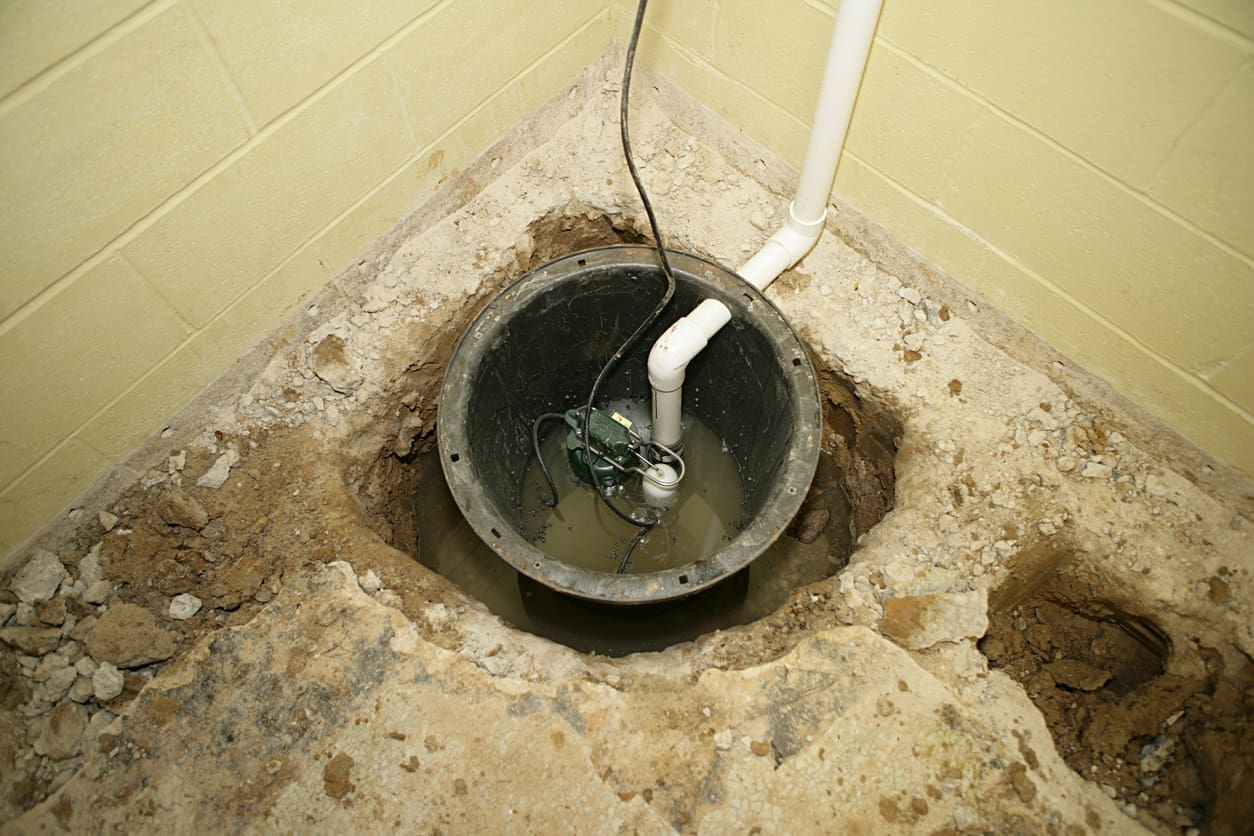Resources
Sump Pump Not Working? Common Sump Pump Problems

Having a fully operational sump pump is essential for keeping your basement dry and preventing water damage. However, sump pumps can fail due to various reasons, leading to potential flooding and costly repairs. If you’re facing issues like a sump pump not turning on or a sump pump stopped working, it’s crucial to address these problems swiftly. In this article, we’ll explore common sump pump problems, how to troubleshoot them, and when to call in experts like Michigan Basements for professional help.
Common Sump Pump Problems
Sump Pump Not Turning On
One of the most common sump pump issues is the unit not activating when needed. This can be due to a power outage, a tripped circuit breaker, or a faulty float switch. First, check your electrical connections and ensure that the pump is plugged in. Next, examine the float switch; if it’s stuck or jammed, it may need cleaning or replacing.
Sump Pump Not Working After Turning On
If your sump pump turns on but doesn’t remove water effectively, it might be due to several factors. Check for clogs or blockages in the pump intake or discharge lines. A sump pump failure can also be due to a malfunctioning impeller or a worn-out motor. Regular maintenance and checks can prevent these issues from escalating.
Sump Pump Problems Due to Overwhelm
During heavy rainfalls, your sump pump might struggle to keep up with the influx of water. If your sump pump not working in these conditions, consider installing a secondary backup pump or upgrading to a more powerful model. This ensures that even during extreme weather, your basement remains dry.
Sump Pump Stopped Working Suddenly
Sudden failures can occur if the sump pump is old or poorly maintained. It’s crucial to replace the pump every 7-10 years. Regular testing and inspection can also help identify potential failures before they become major problems.
Sump Pump Making Noises
Strange noises coming from a sump pump can indicate mechanical issues. Rattling or grinding sounds may suggest that debris has obstructed the pump or the bearings are failing. Regular cleaning and possibly replacing parts that show signs of wear and tear can mitigate this issue.
Sump Pump is Clogged
A clogged sump pump often manifests as reduced efficiency in water removal or strange noises. To check for clogs, disconnect the pump from the power source, remove it from its basin, and inspect it for trapped debris or sediment. Cleaning the pump and the basin regularly prevents clogging.
How to Fix a Sump Pump
Fixing a sump pump involves first diagnosing the problem accurately. If the issue is electrical, such as a sump pump not turning on, resetting the circuit breaker or replacing a bad switch might resolve it. Mechanical issues like a clogged intake require cleaning out debris and ensuring the pump’s components move freely.
Preventive Measures
To minimize sump pump failures and ensure reliability, incorporate these preventive measures:
- Regular Maintenance: Clean your sump pit, test the sump pump operation by pouring water into the pit, and check the battery on backup sump pumps regularly.
- Proper Installation: Ensure that your sump pump installation is correct. Incorrect installations can lead to many of the common issues discussed.
- Consider a Backup: Installing a battery-powered backup sump pump provides an extra layer of protection, especially during power outages.
When to Consider a Replacement
If troubleshooting your sump pump doesn’t resolve the issues, or if the pump is frequently failing, it might be time to consider a replacement. Additionally, installing a water alarm can alert you early to any malfunction or overflow, providing you with a chance to rectify the issue before it leads to water damage.
Conclusion
Dealing with a sump pump that’s not working can be frustrating and potentially disastrous. By understanding the common issues and how to troubleshoot them, you can often fix simple problems yourself. However, for persistent or complex problems, it’s wise to contact professionals. Michigan Basements specializes in all aspects of basement waterproofing and crawl space repair. If you’re facing ongoing issues with your sump pump or need expert advice on maintaining a dry basement, contact Michigan Basements for reliable and efficient solutions. We’re here to help protect your home from the bottom up!


